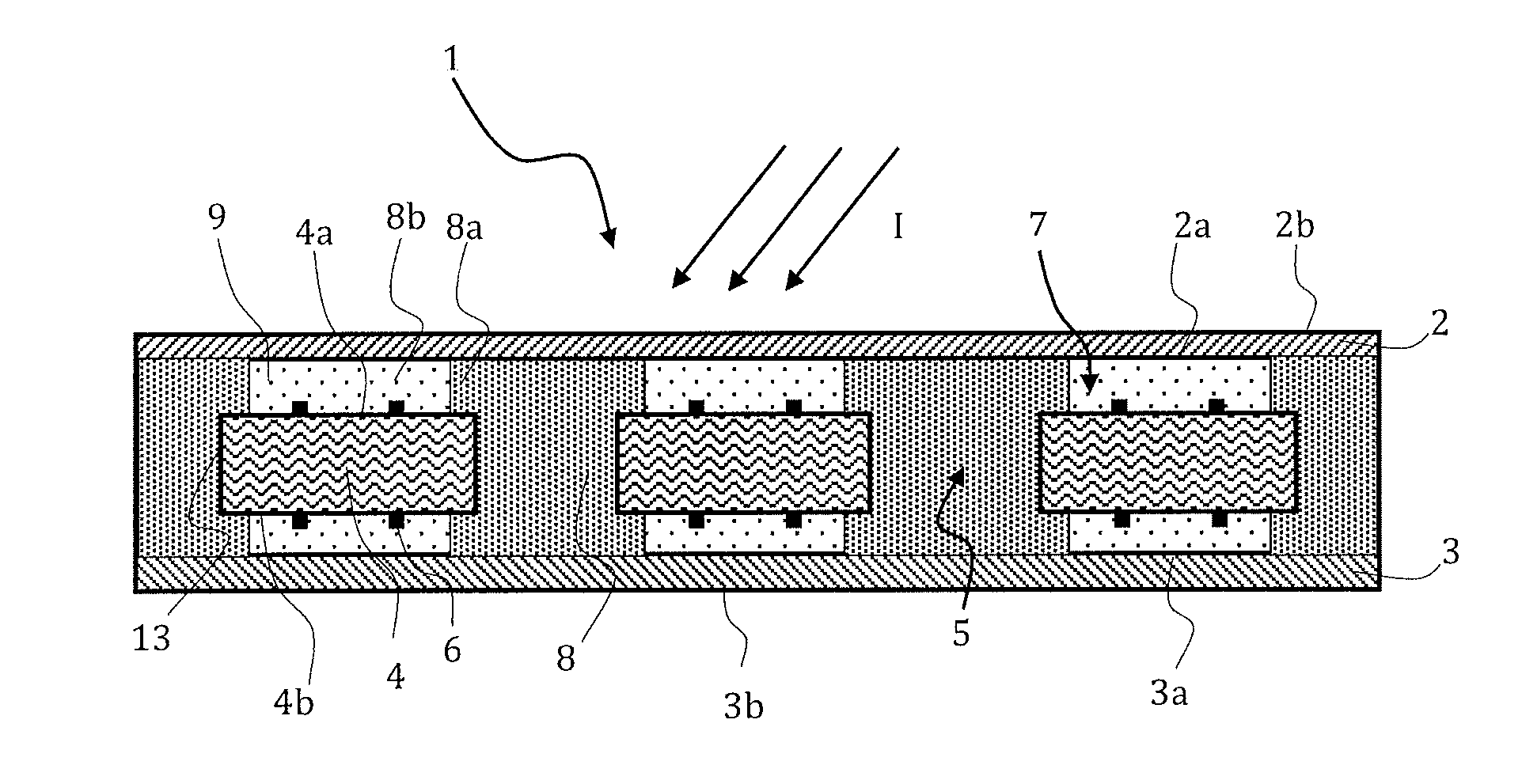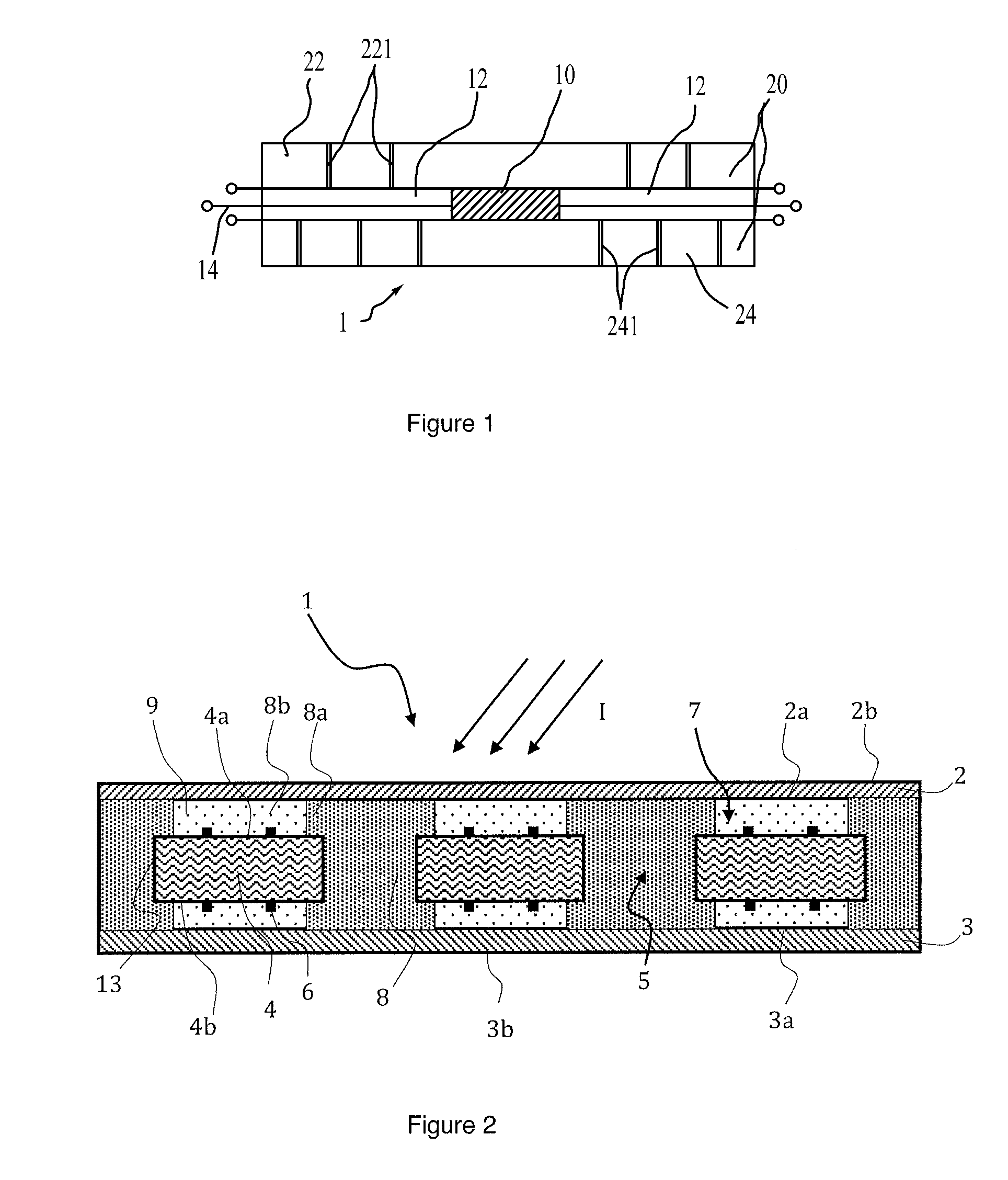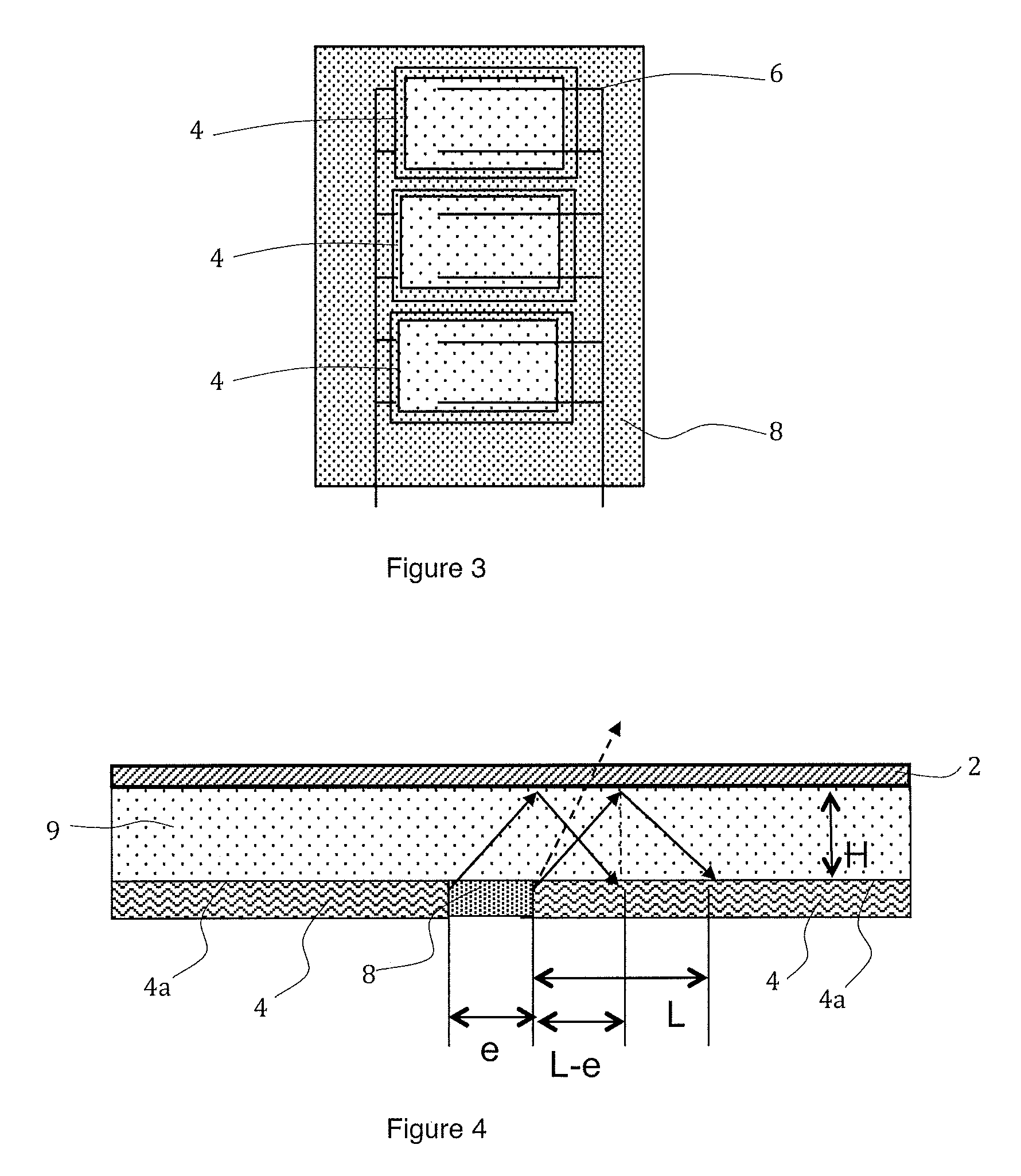Photovoltaic module comprising a localised spectral conversion element and production process
a technology of spectral conversion element and photovoltaic module, which is applied in the direction of basic electric elements, electrical apparatus, and semiconductor devices, etc., can solve the problems of insufficient satisfaction, inability to precisely and costly deposition techniques for photovoltaic module configurations using pyramidal structure, and inability to achieve complete satisfactory solutions. , to achieve the effect of improving conversion efficiency, facilitating implementation, and limited leakage cone phenomena
- Summary
- Abstract
- Description
- Claims
- Application Information
AI Technical Summary
Benefits of technology
Problems solved by technology
Method used
Image
Examples
Embodiment Construction
[0030]As illustrated in FIG. 2, a photovoltaic module 1, designed to convert an incident electromagnetic radiation I into electric power, in particular comprises:[0031]a front plate 2 and a rear plate 3, each respectively comprising an inner face 2a and 2b and an outer face 3a and 3b, [0032]at least one photovoltaic cell 4 arranged between front plate 2 and rear plate 3, comprising at least one active face 4a, i.e. a face able to capture photons of the incident light rays reaching said face 4a and to transform them into electricity.
[0033]Front plate 2 of the module is transparent to the incident electromagnetic radiation, in particular to solar rays. What is meant by front plate is the plate exposed to the incident electromagnetic radiation I. This is for example the plate of the photovoltaic module that is exposed to the sun. Front plate 2 is advantageously made from glass or from plastic.
[0034]Rear plate 3 can also be transparent to the electromagnetic radiation. In the case of a ...
PUM
 Login to View More
Login to View More Abstract
Description
Claims
Application Information
 Login to View More
Login to View More - R&D
- Intellectual Property
- Life Sciences
- Materials
- Tech Scout
- Unparalleled Data Quality
- Higher Quality Content
- 60% Fewer Hallucinations
Browse by: Latest US Patents, China's latest patents, Technical Efficacy Thesaurus, Application Domain, Technology Topic, Popular Technical Reports.
© 2025 PatSnap. All rights reserved.Legal|Privacy policy|Modern Slavery Act Transparency Statement|Sitemap|About US| Contact US: help@patsnap.com



